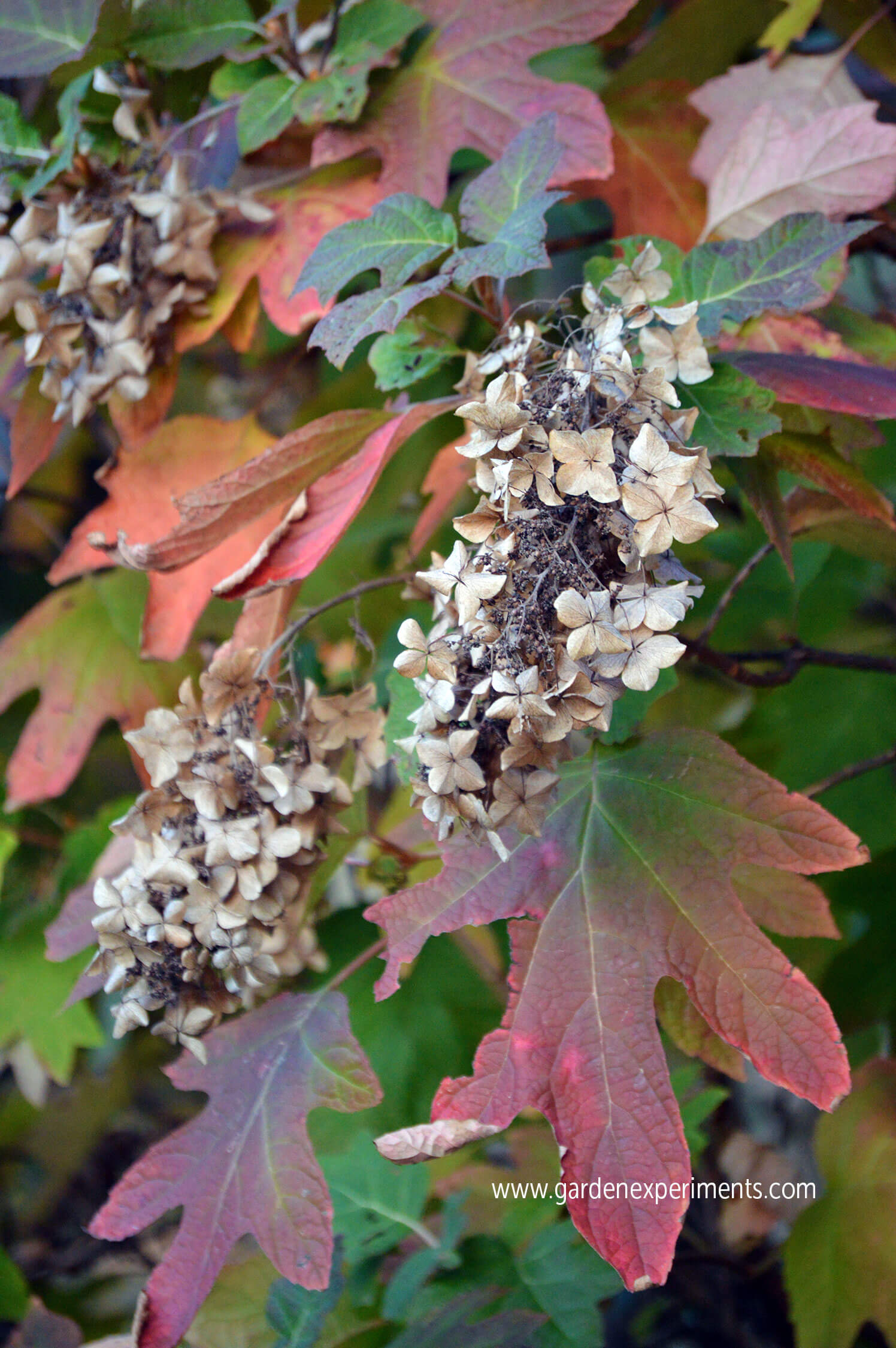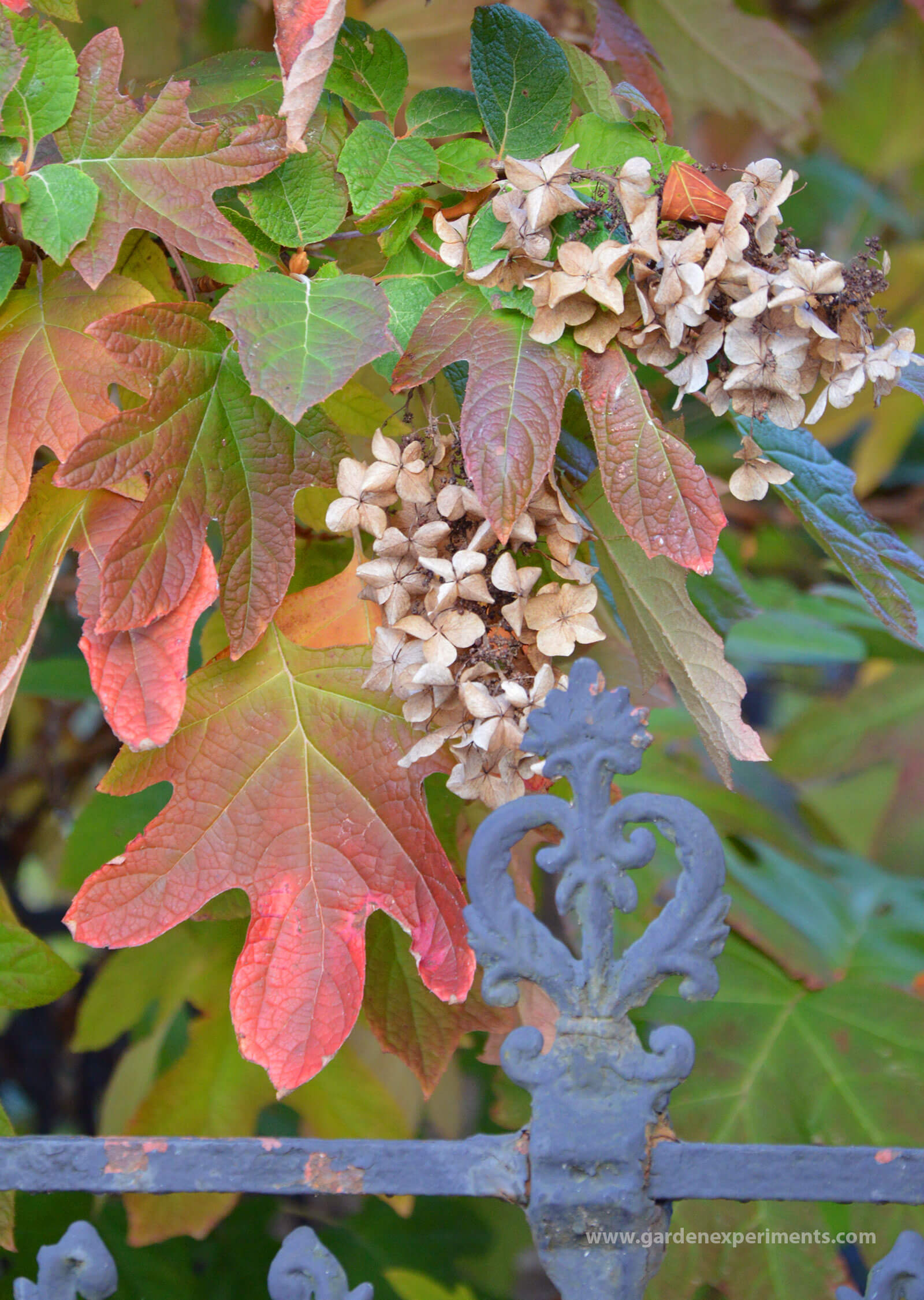Oakleaf hydrangea (Hydrangea quercifolia) is a favorite of native plant gardeners for many reasons. If you’re looking for a shrub that is hardy, produces beautiful flowers, can grow in the shade, and has lovely fall colors, look no further. Here are just a few of the reasons why I love this shrub:
#1 The large white flowers (in the shade!!)
These flowers are quite simply gorgeous! They can get 6-10 inches long and have clusters of small white blooms. The flowers start out small and green, turn white, and then as they age they get a pinkish hue.
I love how the flowers eventually dry out and persist on the plant. So, when winter rolls around, you’ve got some really cool dried flowers in your garden.
Let’s face it, gardening in the shade can get a little, well, boring. The most colorful plants and flowers like the sun. However, the oak leaf hydrangea is an exception. While it likes morning sun, afternoon shade is a must for the best-looking plants.
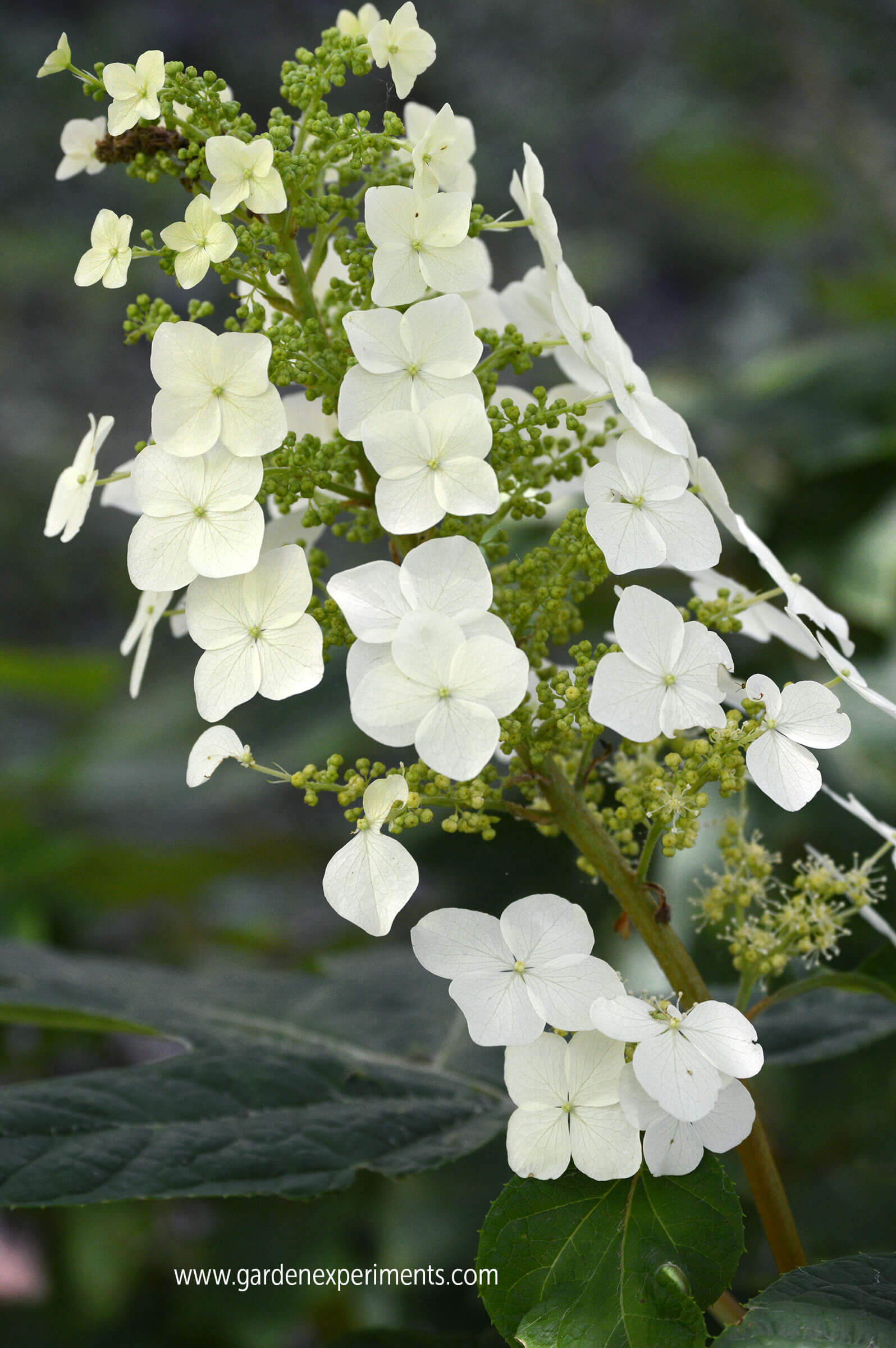
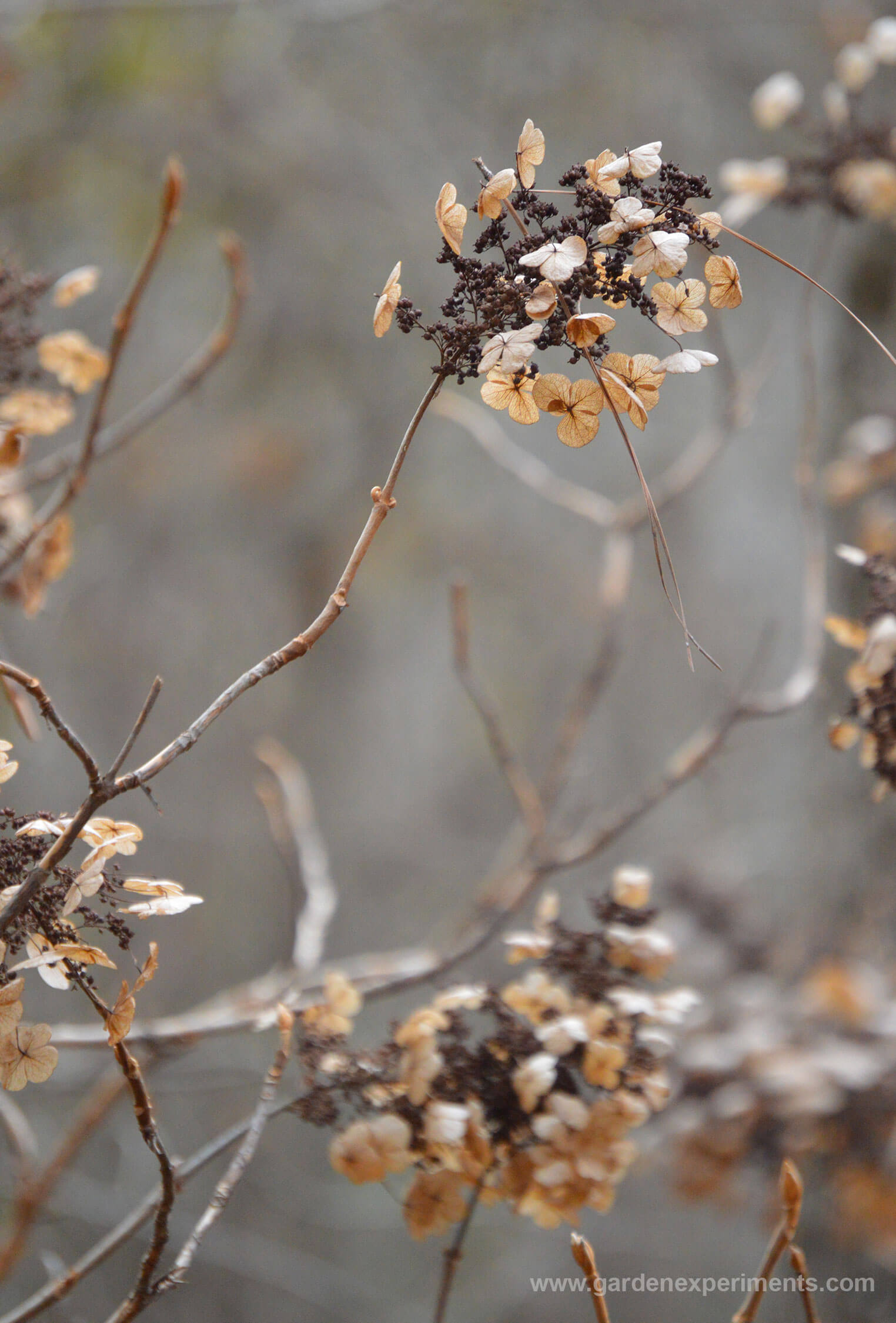
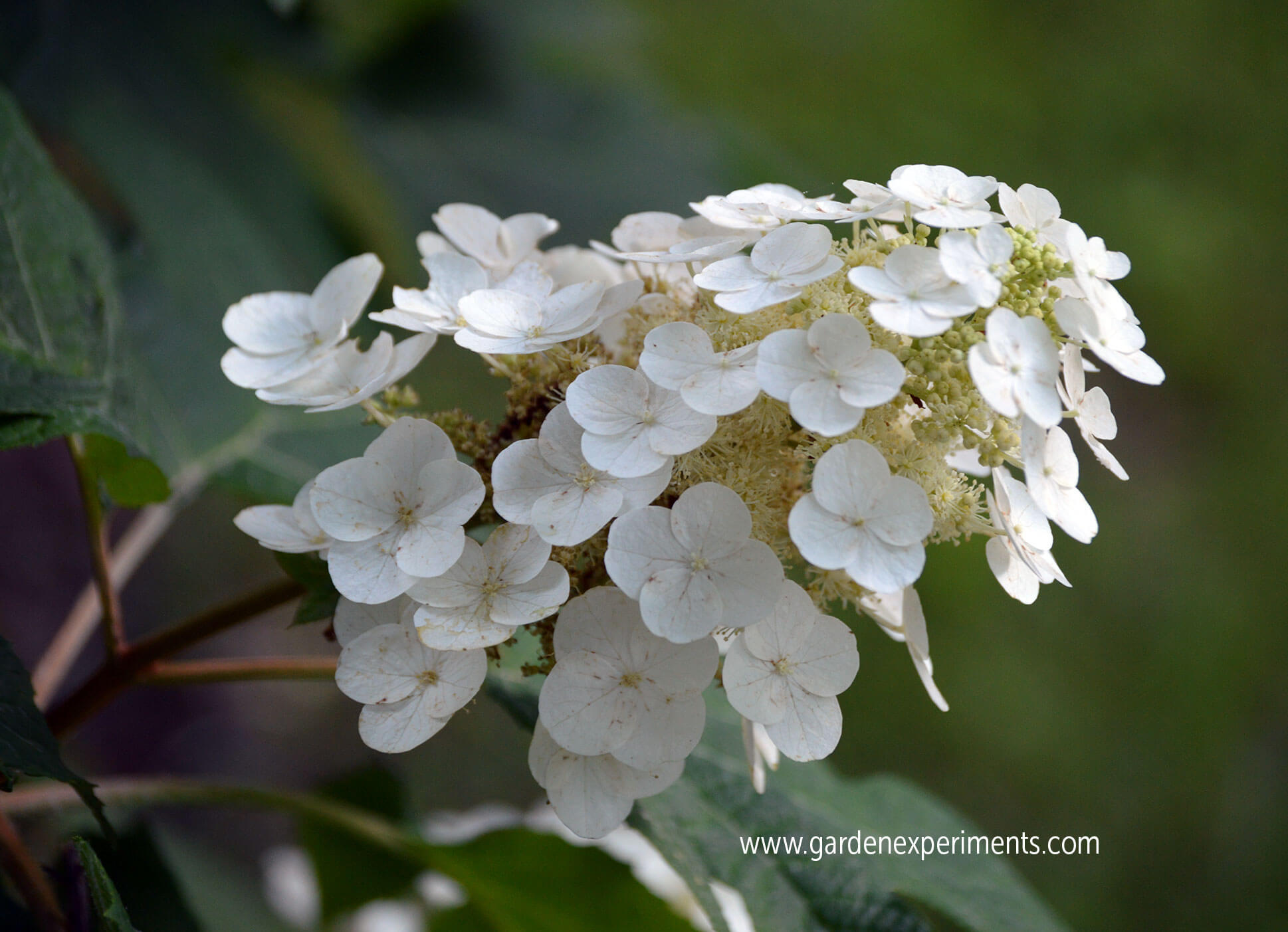
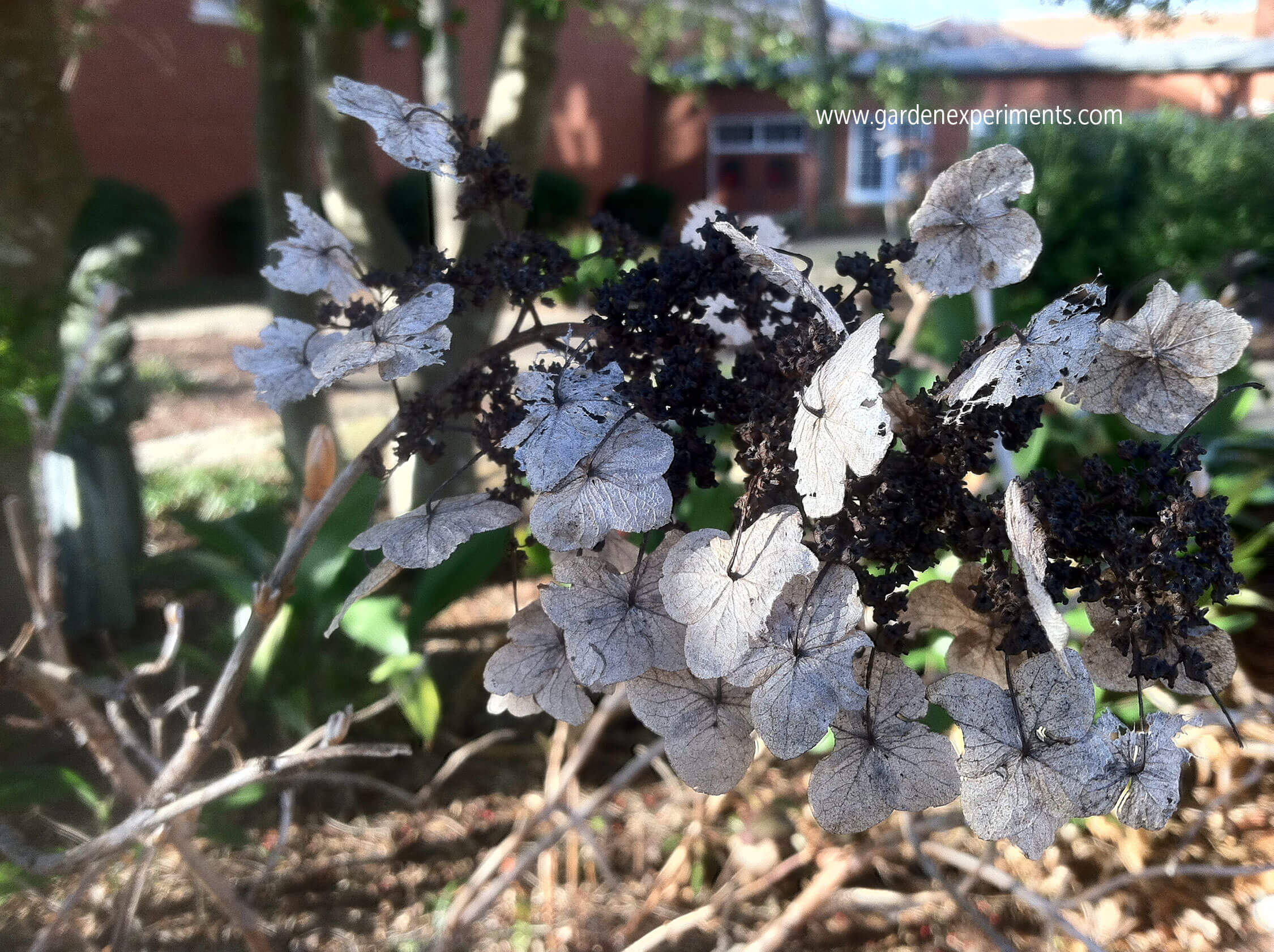
#2 Oakleaf Hydrangea is a Native Shrub!
Native plants have adapted very well to the climate that they grow in, so if you live in the native range of this shrub (TN, AL, FL, GA, LA, MS, NC, SC, TN or DC) then give it a go! It’s hardy, drought tolerant, has a pretty fast growth rate and best of all – no serious pests or diseases to worry about.
#3 Oak leaf Hydrangea has Stunning Fall Colors
The leaves of this plant can get pretty large — up to 10 inches in length. They resemble an oversized oak leaf (hence the name of the plant). Not only are they cool because of their size and shape (they’re oppositely arranged), but in fall the leaves change into lovely hues of red, purple, and brown.
